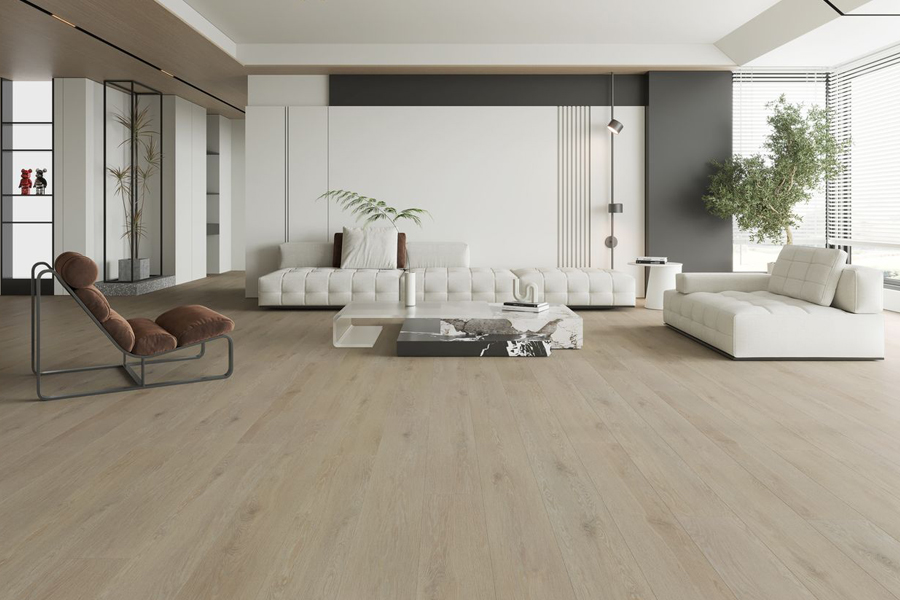Seasonal Care Tips for Your Laminate Flooring
Laminate flooring is a fantastic choice for homes, prized for its durability, realistic beauty, and low maintenance. However, to ensure your laminate flooring maintains its pristine condition for years to come, it’s essential to adapt your care routine to the changing seasons. The climate in Southern California, while mild, still experiences seasonal shifts in temperature and humidity that can affect your flooring. Just like you adjust your wardrobe, a smart approach to seasonal care tips for your laminate floors will provide the best protection and longevity. At Flooring 101, we’ve been helping homeowners care for their floors for over 50 years, and we’re here to provide an essential guide to year-round laminate maintenance.

Why Seasonal Laminate Care Matters
Laminate flooring is constructed with a wood-fiber core, which, although less reactive than solid hardwood, can still expand and contract with significant changes in humidity.
- Summer: High heat and humidity can cause the planks to absorb tiny amounts of moisture and expand. If the floor was installed without proper expansion gaps around the perimeter, this can lead to buckling or “peaking” at the seams.
- Winter: The air can become very dry, especially with heating systems running. This can cause the laminate core to lose moisture and contract, potentially creating small gaps between planks.
Adapting your laminate flooring care to these seasonal shifts is the key to preventing these issues and ensuring your floor remains stable and beautiful.
Summer Care Tips (Heat and Humidity)
Summer in Southern California means more sun, outdoor activities, and higher humidity, especially near the coast.
1. Manage Indoor Humidity
- Issue: Humidity can cause laminate planks to expand.
- Tip: If your home feels excessively humid, use a dehumidifier, especially in basements or lower levels. Maintain indoor humidity levels between 30% and 50% to keep the laminate stable. Your air conditioning system also acts as a dehumidifier, so keeping it running can help.
2. Protect from Sun Fading
- Issue: While laminate is designed to be fade-resistant, prolonged exposure to intense, direct sunlight over many years can still cause subtle discoloration.
- Tip: Use curtains, blinds, or UV-filtering window films on windows that receive strong, direct sunlight. This protects your flooring and helps keep your home cooler.
3. Guard Against Tracked-In Dirt and Spills
- Issue: Increased outdoor activity means more dirt, sand, and spills (like water from a pool or a cold drink).
- Tip: Place high-quality absorbent doormats at all exterior entrances. Be vigilant about immediately wiping up any spills, especially liquids from pools or drinks, with a clean, dry cloth.
Fall Care Tips (The Transitional Season)
Fall brings fluctuating temperatures and the return of rain.
1. Prepare for Wetness
- Issue: Falling leaves and rain can be tracked inside, introducing moisture and staining tannins.
- Tip: Ensure your outdoor walkways are clear of leaves and debris. Reinforce your entryway mat system. Consider using a boot tray to catch wet shoes and umbrellas.
2. Get Ready for the Heating Season
- Issue: As temperatures drop, heating systems will be turned on, beginning to dry out the indoor air.
- Tip: If you use a humidifier in the winter, ensure it’s clean and ready for use. Start monitoring your indoor humidity levels so you can be proactive once the air starts to get dry.
3. Deep Clean Before Winter
- Issue: Fall is a great time to remove all the grit and grime from the summer.
- Tip: Give your laminate a thorough cleaning before the dry winter season sets in. Sweep and then damp mop with a laminate-specific cleaner to remove all residues.
Winter Care Tips (Cold and Dry)
Winter in Ventura and Santa Barbara Counties can be surprisingly dry, especially with heating systems running indoors.
1. Introduce Humidity to Prevent Gaps
- Issue: Dry indoor air can cause laminate planks to contract, creating small gaps between boards.
- Tip: Use a humidifier to add moisture back into the air, aiming for that ideal 30-50% humidity range. This is the most crucial of all seasonal care tips for your laminate flooring during winter.
2. Guard Against Abrasive Grit and Salt
- Issue: Winter brings more opportunities to track in dirt, sand, and even salt from roads (if applicable), which can be abrasive.
- Tip: Continue with a regular sweeping and vacuuming routine. Be extra mindful of cleaning shoes at the door.
3. Avoid Extreme Temperature Swings
- Issue: Large temperature swings can stress the flooring.
- Tip: Try to keep your home’s temperature as consistent as possible, avoiding extreme drops or spikes in heat.
Spring Care Tips (The Thawing and Growth Season)
Spring brings rain and rising temperatures and humidity.
- Issue: Spring rains can highlight leaks around windows or doors.
- Tip: Inspect around windows and doors for any signs of water intrusion that could damage your laminate. Address any leaks immediately.
- Issue: Pollen, dust, and outdoor allergens can accumulate on your floors.
- Tip: Increase the frequency of dry sweeping and vacuuming. Damp mop more often with a suitable laminate cleaner to remove allergens that settle on the surface.
Your Partner for All-Season Laminate Care
Your laminate flooring is an investment in your home’s beauty and practicality. By following these seasonal care tips for your laminate flooring, you can proactively protect it from the unique challenges of each season in Ventura and Santa Barbara Counties, ensuring its durability and stunning appearance for many years to come.
Flooring 101 has been providing flooring services to Ventura and Santa Barbara Counties for over 50 years. We feature the latest flooring innovations and designs from major national brands. We provide free in-home measurements and estimates, professional installation, and advanced cleaning and maintenance services to make the experience of buying and enjoying your new floors a pleasure.
Contact us or visit our showroom locations in Oxnard, CA – Ventura, CA – Bakersfield, CA – Goleta, CA – Thousand Oaks, CA – Santa Maria, CA – Simi Valley, CA.


